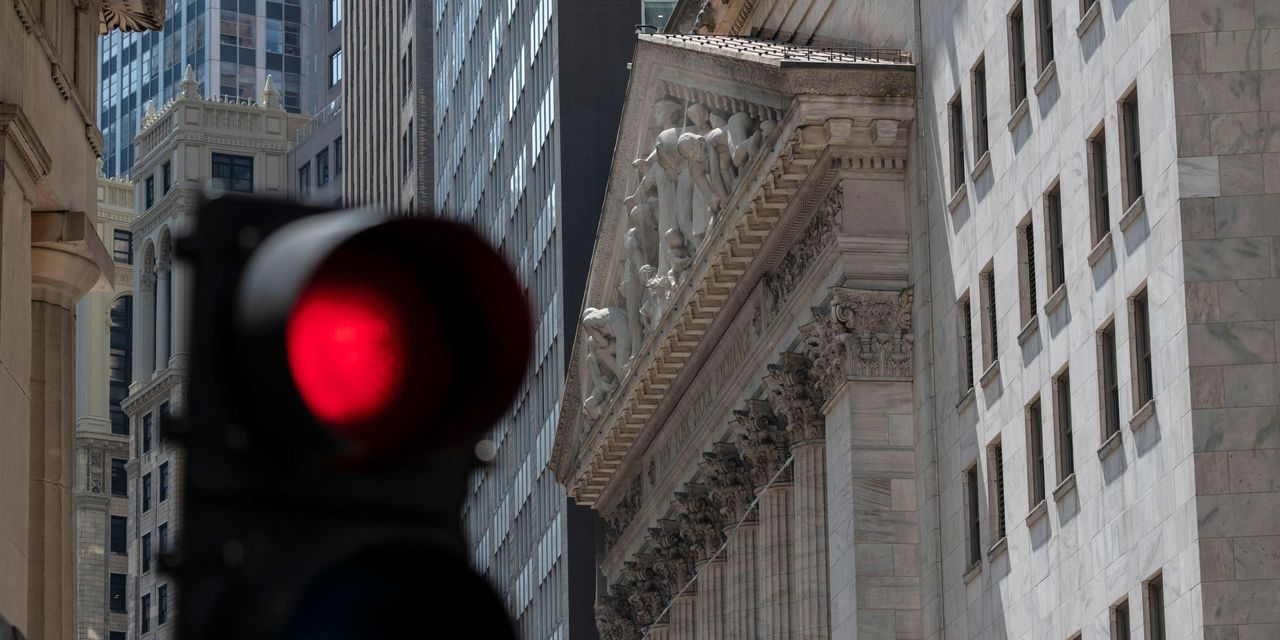The rising yields on U.S. government debt, which sent the 10-year Treasury rate near 5%, a level not seen in 16 years, has posed a challenging environment for stock market investors.
The 10-year Treasury
BX:TMUBMUSD10Y
yield ended Thursday at the highest level since 2007 just shy of 5%, before drifting back down on Friday. The 30-year Treasury
BX:TMUBMUSD30Y
rate also posted its highest close since 2007 on Thursday before pulling back.
Bond market volatility is also elevated compared to historical levels. The ICE BofA MOVE Index, known as the bond market “fear gauge,” in early October hit 142, its highest level since May. It stood at around 135.5 on Friday, according to FactSet data.
“I think we’re in a new era where having bonds is not safe. Bonds are not risk free — the 30 year Treasury lost more than the Nasdaq in 2022,” said Nancy Davis, portfolio manager for the Quadratic Interest Rate Volatility & Inflation Hedge ETF
IVOL.
The rise of Treasury yields have contributed the most to the stock market’s recent weakness, according to Jay Hatfield, chief executive at Infrastructure Capital Management.
U.S. stocks ended the week lower, with the Dow Jones Industrial Average
DJIA
down 1.6%, and the S&P 500
SPX
2.4% lower. The Nasdaq Composite
COMP
lost 3.2% over the past week, according to Dow Jones market data.
Equities are essentially very long-duration securities, making them sensitive to interest rates, Hatfield said. As interest rates go up, stocks’ future earnings are discounted at a higher rate.
Rising Treasury yields are also making risky investments less attractive. Yields on fixed income instruments are exceeding the yield on S&P 500 index company earnings by an increasingly wider margin. “It just doesn’t make sense to own equities at elevated prices with the 10-year Treasury yielding near 5%,” according to Jose Torres, senior economist at Interactive Brokers.
Hatfield said that their models show that an increase of every 40 basis points in the 10-year Treasury yield theoretically lowers the S&P 500 multiple by one point.
For the past three months, the 10-year Treasury yield went up 108 basis points, which implies the S&P 500 multiple should drop almost three points, Hatfield noted. The S&P 500’s price per earnings ratio stood at 19.34 on Thursday, according to Dow Jones market data.
Sentiment was also not helped by Federal Reserve Chair Jerome Powell on Thursday who described bond market volatility as something the Fed should let “play out,” though he said the rise of Treasury yields is tightening financial conditions and could potentially substitute for further Fed interest rate hikes “at the margin.”
Read: Bond traders see ‘green light’ to push up yields after Powell remarks: Fed watcher
From the technical perspective, Torres said he expects the 10-year Treasury yield to test 5.29% in the next few months. If it rises above that, “we’re in pretty much uncharted territory in terms of how high we could go.” The yield could go as high as 6% in this cycle, until a recession brings it down. said Torres.
Hatfield is more optimistic, expecting the 10-year Treasury yield to peak at around 5%. Next week, “if rates are just a little bit stable, the stock market should be driven more by earnings than interest rates, because we’re getting the earnings from tech mega giants and there’s no way people can ignore them,” Hatfield said.
Microsoft Corp.
MSFT,
Google’s parent company Alphabet Inc.
GOOGL,
and Visa Inc.
V,
will report their earnings results for the third quarter on the coming Tuesday. Facebook parent Meta Platforms Inc.
META,
and Amazon
AMZN,
are due to report on the coming Wednesday and Thursday, respectively.
Still, Hatfield said he wouldn’t make any big moves in the current market environment. “We are bullish about rates and the stock market but things are dicey. There’s still a war going on in the Middle East. And positive inflation data won’t arrive until November,” he added.
Preferred shares, which pay a fixed dividend to shareholders, could be a good choice, and investors may choose to add some tech stocks with their earnings reports coming next week.
All that said, Hatfield said his biggest advice for investors is to stay cautious. “This is adult Swim. This is a market where you want the best traders in the world dealing with it.”
With bond yields at elevated levels, it is the best for active management instead of passive investing, said Torres.
“We’re gonna have much more subdued stock market performance in the next five to 10 years, with rates that high. I think that it’s really a stock pickers environment and choosing the right companies and the right sectors that are set to thrive at the right time,” Torres said.
The next major data points are the flash October manufacturing purchasing managers indexes which will be released on Tuesday, and the September personal consumption expenditure (PCE) price index, due Friday in the coming week.
Investors will expect September new home sales numbers on Wednesday, and data on U.S. third quarter GDP, weekly initial jobless benefit claims, and September durable-goods orders on Thursday.
Read the full article here












